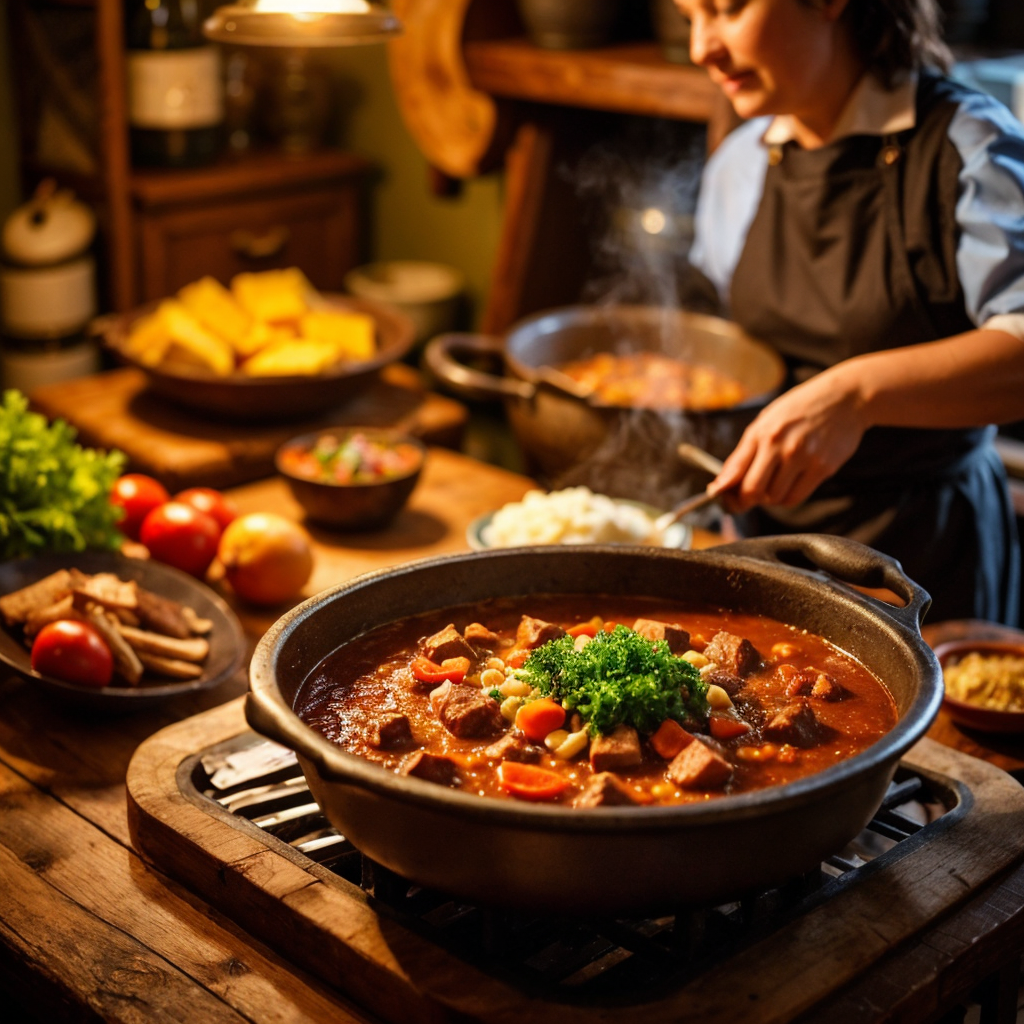Wander the streets of Budapest on a crisp autumn day, and the aroma of something rich and savory may beckon you. Follow your nose to a cozy eatery where a steaming bowl of goulash awaits. This is no ordinary stew; it’s a hearty blend of tender beef, vegetables, and spices, with a deep red hue that promises warmth and satisfaction. Goulash, or Gulyás as the Hungarians call it, is not just food; it’s a cultural icon, offering a taste of history with every bite.

Recipe:
- Ingredients:
- 1 1/2 pounds stewing beef, cut into 1-inch cubes
- 2 tablespoons vegetable oil
- 2 medium onions, chopped
- 2 cloves garlic, minced
- 3 tablespoons sweet paprika
- 1 teaspoon caraway seeds (optional)
- 1 bell pepper, chopped
- 1 tomato, diced
- 4 cups beef broth
- 2 large potatoes, peeled and cubed
- 2 carrots, sliced
- Salt and pepper to taste
- 1/2 cup sour cream (optional, for garnish)
- Fresh parsley, chopped (optional, for garnish)
- Instructions:
- Brown beef cubes in oil, set aside.
- Cook onions until softened.
- Add garlic, paprika, caraway seeds; cook for 1 minute.
- Return beef to pot, add bell pepper and tomato; cook 2 minutes.
- Pour in beef broth, simmer for 1 hour.
- Add potatoes and carrots; simmer until tender.
- Season with salt and pepper.
- Garnish with sour cream and parsley if desired.
Goulash has a rich history, dating back to the 9th century. It started as a simple meal for shepherds, with origins in the pastoral practices of the Magyar people. They would dry seasoned meat in the sun, pack it into bags made from sheep’s stomachs, and add water when needed. Over time, this practical dish turned into the goulash known today, a cornerstone of Hungarian cuisine.


Goulash offers variety as well as flavor. Traditional recipes call for beef, but other versions might include different meats or vegetarian alternatives. Bell peppers and hot peppers are common in many variations, adding a bit of a twist. In Hungary, expect to pay between 1,000 to 2,500 Forint for a bowl, which is affordable by international standards.
Goulash is also a dish for special occasions, often featured at family gatherings and festive events. Its comforting warmth makes it especially popular during the cold months. Whether prepared in a simple kitchen or an upscale restaurant, goulah is known for its comfort and symbolizes Hungarian hospitality.
This stew has become popular outside of Hungary as well. Countries like Austria, Germany, and the Czech Republic have their own takes on the dish, celebrating the shared culinary heritage of Central Europe. Each variation showcases the local flavors, ingredients, and culinary customs, allowing goulah to transcend borders and unite people.
When craving something hearty and comforting, consider making goulash at home. It’s an easy dish, welcoming to beginners and open to different interpretations. Serve it with a slice of crusty bread for a meal that is nourishing and satisfying.

